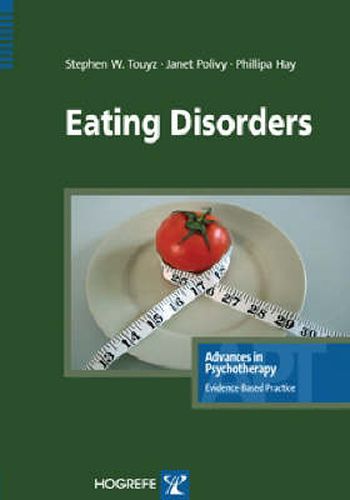Readings Newsletter
Become a Readings Member to make your shopping experience even easier.
Sign in or sign up for free!
You’re not far away from qualifying for FREE standard shipping within Australia
You’ve qualified for FREE standard shipping within Australia
The cart is loading…






Eating disorders are causing increasing problems in our society, and many approaches to treatment are used, some more successful than others. This volume in the new series, Advances in Psychotherapy - Evidence-Based Practice, provides therapists and students with practical and evidence-based guidance on diagnosis and treatment of eating disorders, and does so in a uniquely reader-friendly manner. The book is both a compact how-to reference, for use by professional clinicians in their daily work, as well as an ideal educational resource for students and for practice-oriented continuing education. The most important feature of the book is that it is practical and reader-friendly. It has a similar structure to others in the series, and is a compact and easy-to-follow guide covering all aspects of practice that are relevant in real-life. Tables, boxed clinical pearls, and marginal notes assist orientation, while checklists for copying and summary boxes provide tools for use in daily practice. The series has been developed and is edited with the support of the Society of Clinical Psychology (APA Division 12). The Society is planning a system of home study continuing education courses based on the series that an individual can complete on the web.
$9.00 standard shipping within Australia
FREE standard shipping within Australia for orders over $100.00
Express & International shipping calculated at checkout
Eating disorders are causing increasing problems in our society, and many approaches to treatment are used, some more successful than others. This volume in the new series, Advances in Psychotherapy - Evidence-Based Practice, provides therapists and students with practical and evidence-based guidance on diagnosis and treatment of eating disorders, and does so in a uniquely reader-friendly manner. The book is both a compact how-to reference, for use by professional clinicians in their daily work, as well as an ideal educational resource for students and for practice-oriented continuing education. The most important feature of the book is that it is practical and reader-friendly. It has a similar structure to others in the series, and is a compact and easy-to-follow guide covering all aspects of practice that are relevant in real-life. Tables, boxed clinical pearls, and marginal notes assist orientation, while checklists for copying and summary boxes provide tools for use in daily practice. The series has been developed and is edited with the support of the Society of Clinical Psychology (APA Division 12). The Society is planning a system of home study continuing education courses based on the series that an individual can complete on the web.